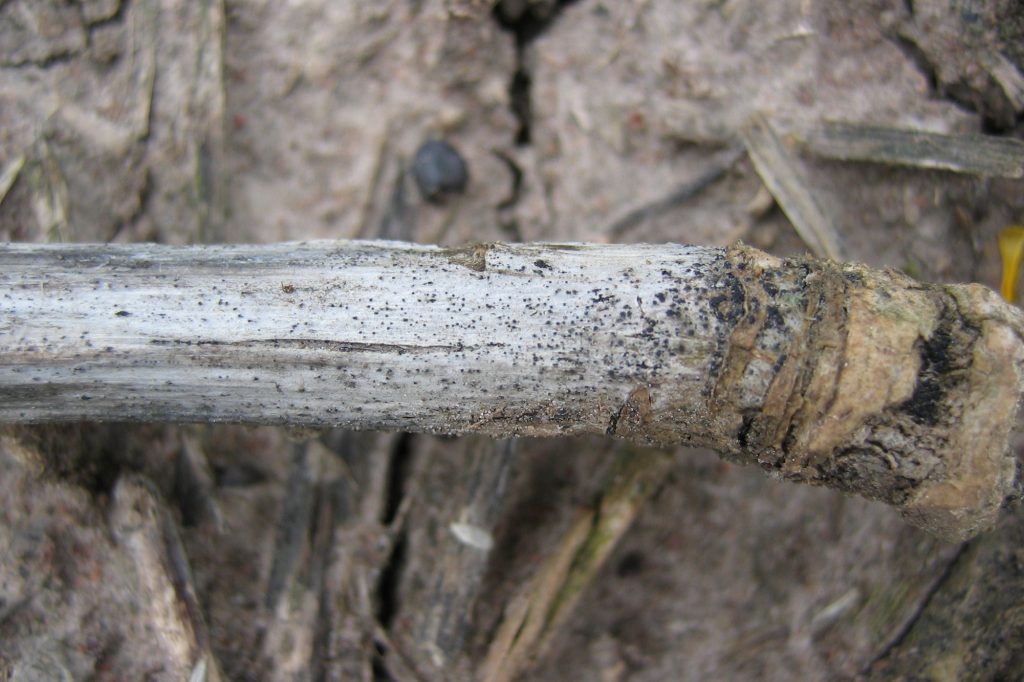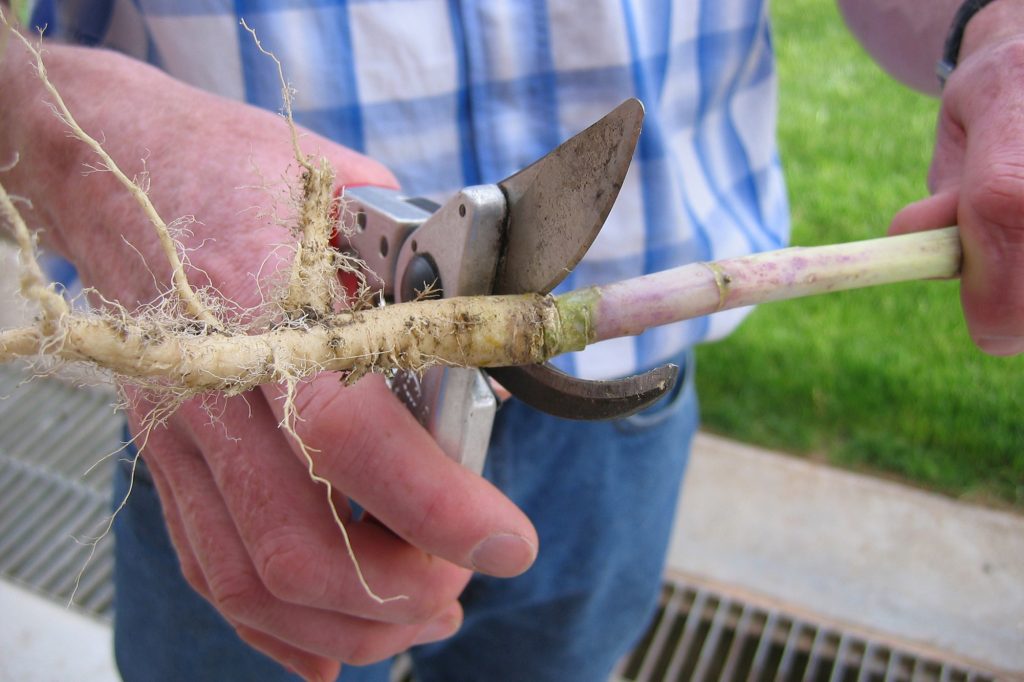Blackleg has been quite severe in Victoria and New South Wales this year with heavily infected crops being reported from most growing regions.
Blackleg disease of canola is caused by the fungal pathogen Leptosphaeria maculans. This stubble borne disease affects canola crops across Australia but is more severe in areas of intensive production such as South Australia’s lower Eyre Peninsula.
So far in 2016, blackleg has been quite severe in Victoria and New South Wales with heavily infected crops reported from most growing regions. This increased severity, at least in Victoria, is probably due to drought affecting the previous two seasons.
Blackleg life cycle and symptoms
Blackleg survives on canola stubble, producing fruiting bodies that contain large quantities of airborne spores.
In the autumn and winter, rainfall triggers spore release from these fruiting bodies and within 2 weeks of spores landing on canola cotyledons and young leaves, clearly visible lesions develop.

Photo provided by Steve Marcroft and Angela Van de Wouw 
Photo provided by Steve Marcroft and Angela Van de Wouw
Once the lesion has formed, the fungus grows within the plant’s vascular system to the crown where it causes the crown of the plant to rot resulting in a canker.
Severe stem cankers will sever the roots from the stem, whereas a less severe infection will result in internal infection of the crown restricting water and nutrient flow within the plant.
In the past few seasons new blackleg symptoms have been observed whereby blackleg is infecting the upper stems, branches and pods.

Photo provided by Steve Marcroft and Angela Van de Wouw 
Photo provided by Steve Marcroft and Angela Van de Wouw
Blackleg disease is challenging to control due to a number of factors
- Blackleg is a sexually reproducing pathogen that will overcome cultivar resistance genes.
- Fungal spores are released from canola stubble and therefore disease is more severe in areas of intensive canola production.
- Spores are spread extensively and quickly via wind and rain splash.

Photo provided by Steve Marcroft and Angela Van de Wouw 
Photo provided by Steve Marcroft and Angela Van de Wouw
Controlling blackleg disease
Blackleg disease can be minimised using a range of management strategies. These include:
- Growing cultivars with high levels of blackleg resistance.
- Growing this year’s crop at least 500 m away from the previous year’s crop (stubble avoidance).
- Fungicide applications.
- Rotation of cultivars with different resistance groups.
Each year, growers should monitor their crop to determine whether there is any yield loss due to blackleg. To monitor crops, pull plants from the ground and cut the stems at the crown. Inspect the amount of internal infection (blackening) within the stems to determine whether blackleg is present and needs managing.
Growers can then consult the current Blackleg Management Guide and follow the management steps to reduce the effect of blackleg.

Photo provided by Steve Marcroft and Angela Van de Wouw 
Photo provided by Steve Marcroft and Angela Van de Wouw
Acknowledgements
The PestFacts south-eastern team would like to thank the guest authors of this article:
Dr Angela Van de Wouw, Academic, The University of Melbourne, Parkville apvdw2@unimelb.edu.au
Dr Steve Marcroft, Pathologist, Marcroft Grains Pathology, Grains Innovation Park, 110 Natimuk Road, Horsham marcroft@grainspathology.com.au
Cover image: Photo provided by Steve Marcroft and Angela Van de Wouw





